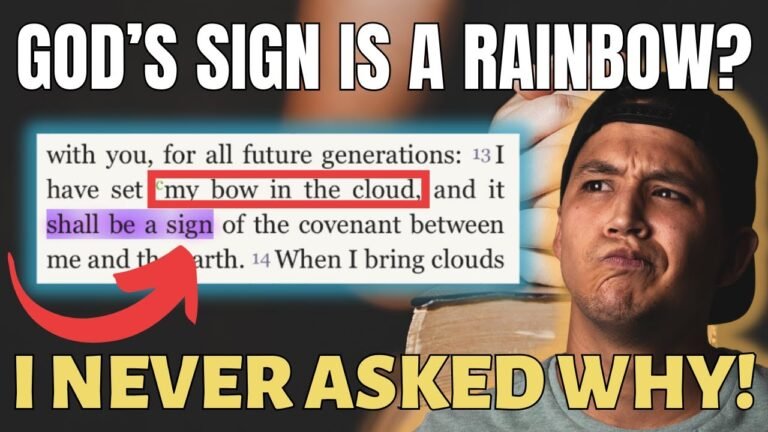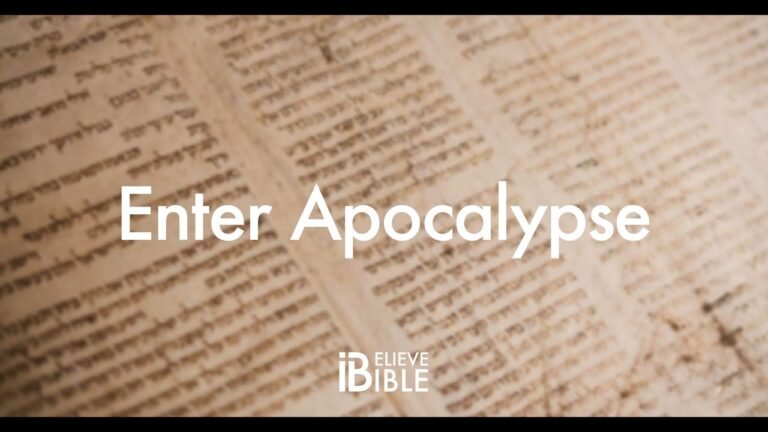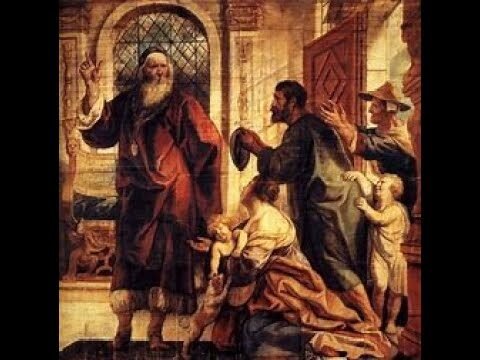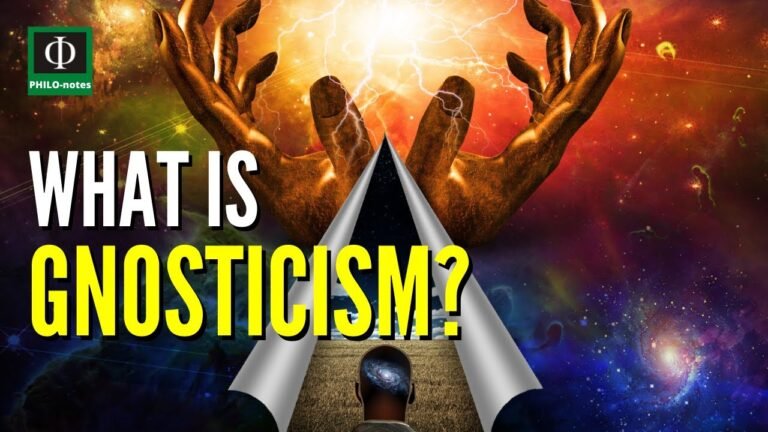The Significance of the Rainbow Verse in the Bible
The concept of the rainbow verse in the Bible holds profound significance, symbolizing hope, promise, and divine assurance. Found in the story of Noah, this vibrant imagery captures the moment when God establishes a covenant with humanity after the flood, using the rainbow as a sign of His enduring love and protection. As we delve into this iconic symbol, we explore its theological implications and the enduring message of renewal and faith that resonates through the ages, inviting believers to reflect on the beauty and power of divine promises.
What is mentioned in the Bible regarding rainbows?
Rainbows hold profound significance in the Bible, symbolizing divine promise and hope. After the great flood, God established a covenant with Noah and all living beings, using the rainbow as a vivid reminder of His commitment never to destroy the earth by flood again. This celestial phenomenon serves as a reassurance of God’s mercy and faithfulness to humanity.
In this sacred context, the rainbow transcends mere beauty, embodying a powerful message of renewal and trust. Each time a rainbow graces the sky, it invites reflection on the promises made by God, reminding us of the enduring bond between the Creator and creation. It stands as a testament to hope, illuminating the belief that even after storms, peace and tranquility can emerge.
The biblical portrayal of rainbows encourages us to embrace the symbols of faith in our lives. It calls for a deeper understanding of the promises we hold dear, urging us to recognize the beauty that can emerge from adversity. In seeing a rainbow, we are reminded of the assurance that accompanies God’s presence, inspiring us to foster hope and resilience in our own journeys.
Which Bible verse discusses the revelation of the rainbow?
In the vivid imagery of Revelation, the rainbow serves as a powerful symbol of God’s promise and presence. Positioned around the throne, it reflects not only beauty but also hope, showcasing the divine nature of the one who reigns. The description of the throne adorned with colors like jasper and carnelian adds depth to this heavenly scene, inviting readers to contemplate the majesty of the Creator.
The radiant rainbow, described as shining like an emerald, highlights the connection between God’s promises and the covenant He established with humanity. This imagery evokes a sense of peace and assurance, reminding believers of God’s faithfulness in the midst of uncertainty. It stands as a testament to the enduring love and grace that envelops those who seek refuge in His presence.
Ultimately, the depiction of the rainbow surrounding the throne encapsulates the beauty of divine revelation. It serves as a reminder that God’s glory and promises are ever-present, illuminating the path for those who follow Him. This vivid portrayal encourages a deeper understanding of the relationship between the divine and humanity, inspiring hope and faith in the journey of life.
When does the Bible mention the rainbow?
The rainbow makes its first appearance in the Bible towards the conclusion of the narrative surrounding the great flood, specifically in the book of Genesis, chapters 6 to 9. This vibrant symbol emerges as a divine promise following the cataclysmic events that reshaped the earth, signifying hope and renewal after devastation.
In this context, the rainbow serves not only as a natural phenomenon but also as a profound reminder of God’s covenant with humanity. It embodies the assurance that never again would the world be destroyed by water, marking a pivotal moment in the biblical story where grace triumphs over judgment and the possibility of a new beginning is offered to all.
Unveiling the Promise: Understanding the Rainbow Verse
In a world where diversity is celebrated, the Rainbow Verse emerges as a vibrant tapestry of voices and stories, inviting us to explore the rich spectrum of human experience. This innovative collection of poetry and prose encapsulates the essence of individuality, weaving together themes of love, identity, and resilience. Each piece serves as a beacon of hope, illuminating the unique journeys that shape our communities and challenge societal norms.
As we delve deeper into the Rainbow Verse, we uncover not only the beauty of self-expression but also the power of connection. This literary movement fosters empathy and understanding, encouraging readers to embrace differences and find common ground. By sharing these heartfelt narratives, the Rainbow Verse paves the way for a more inclusive future, where every voice is heard, and every story is valued. Through its pages, we are reminded that our collective strength lies in our diversity, inviting us to celebrate the kaleidoscope of life.
A Symbol of Hope: The Rainbow Verse Explained
The Rainbow Verse stands as a vibrant testament to resilience and unity, weaving together the diverse threads of human experience. This powerful symbol embodies hope, reminding us that even after the darkest storms, beauty can emerge in myriad colors. Each hue in the rainbow represents a different emotion and journey, inviting individuals to embrace their unique stories while fostering a sense of community and understanding. As we reflect on the Rainbow Verse, we are inspired to celebrate our differences and find strength in our shared aspirations for a brighter, more harmonious future.
Divine Assurance: The Meaning Behind the Rainbow
The rainbow has long been a powerful symbol of hope and divine assurance, representing a bridge between earth and the heavens. This stunning meteorological phenomenon, with its vibrant colors arching across the sky, serves as a reminder of promises and new beginnings. For many cultures, the rainbow signifies the fulfillment of a covenant, offering solace in times of uncertainty and despair. As a natural wonder, it inspires a sense of wonder and connection to the divine, encouraging individuals to embrace optimism and resilience in their own lives, trusting that brighter days lie ahead.
Connecting Faith and Nature: The Impact of the Rainbow Verse
In a world often marked by division, the symbolism of the rainbow serves as a powerful reminder of unity and hope. This vibrant spectrum, described in sacred texts as a divine promise, transcends cultural and religious boundaries, inviting people from all walks of life to reflect on their shared values. The rainbow encapsulates the beauty of diversity, illustrating how different perspectives can come together to create something magnificent.
The impact of the rainbow verse extends beyond mere symbolism; it encourages a deeper appreciation for nature and its role in spiritual connection. As we observe the breathtaking colors arching across the sky after a storm, we are reminded of the resilience found in both faith and the natural world. This connection fosters a sense of responsibility to protect our environment, recognizing that the beauty of creation is a reflection of our beliefs and values.
Ultimately, the rainbow verse inspires us to cultivate a harmonious relationship between faith and nature. It urges us to see the sacred in the world around us, fostering a sense of gratitude and stewardship. By embracing this connection, we can find strength in our shared humanity and work towards a future where both spiritual and ecological well-being are prioritized, allowing us to thrive together in a vibrant, interconnected world.
The rainbow verse in the Bible serves as a powerful symbol of hope and divine promise, reminding us of the enduring connection between humanity and the Creator. Its vibrant colors not only illuminate the sky after a storm but also inspire us to embrace unity and resilience in our own lives. As we reflect on this timeless message, we find encouragement to navigate challenges with faith and to cherish the beauty that follows adversity.







